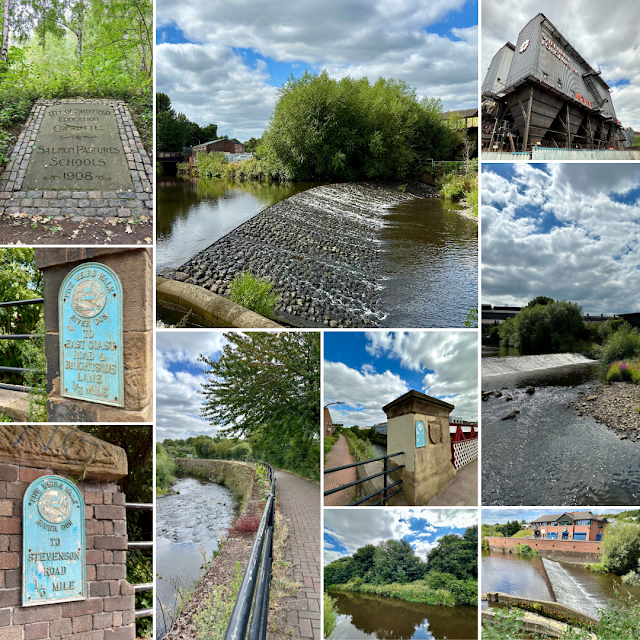F is for Five Weirs Walk
Lady's Bridge, near the heart of old Sheffield, was the first crossing over the River Don, close to the site of William de Lovetot's Norman castle. Built in the late 12th century, the bridge served the town's markets and key industries like corn-milling, brewing, and steelmaking. The current structure, originating in 1486, has been widened three times but retains elements of its medieval design. The bridge is named after a chapel dedicated to the Virgin Mary. Remarkably, it survived the Great Sheffield Flood of 1864, when the Dale Dyke reservoir burst, causing widespread destruction.
The weirs which can be seen from the walk are Walk Mill Weir, Burton Weir, Sanderson Weir, Brightside Weir, and Hadfields Weirs. There are however over a hundred weirs on Sheffield's river system.
Wildlife on the Five Weirs Walk - the River Don, heavily polluted during the Industrial Revolution, became lifeless. Since the late 1970s, improvements in water quality due to pollution control and reduced industrial activity have revived the river. Fish began to reappear downstream of the weirs, but these barriers still hindered migrating species like salmon. To address this, fish passes are being constructed over the weirs, allowing fish to return. The cleaner water now supports invertebrates, which attract birds like wagtails, herons, and kingfishers. Many fish species, including brown trout and grayling, have returned, leading to otter sightings in Sheffield.
Developed over 20 years by the Five Weirs Walk Trust with support from various groups, the walk has become central to regenerating Sheffield's urban river corridor.
At Meadowhall the route links with the Sheffield and Tinsley Canal creating a 13km circular "Blue Loop" route back into the city centre, or connects with the Trans Pennine Trail along the river to Rotherham.







0 Comments